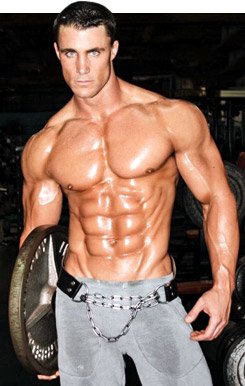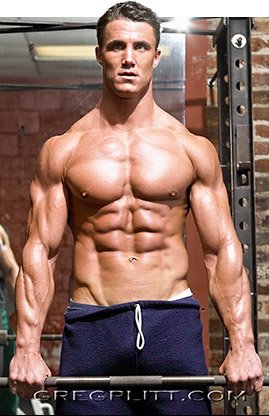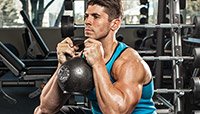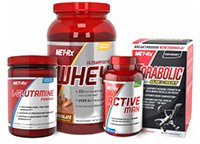
The New Law Of Supply And Demand: Supply Your Body's Demands
The key moment in your workout comes when you set down the weights. Learn what and when to feed your muscles post-workout.
Three trillion dollars—that's how much the world spends on "wellness" each year. Business is booming; unfortunately, the results are often a bust. Which, strangely enough, is good for business. The thing that matters to many health marketers is that people try something, because people spend money trying things. If it doesn't work, people might pay more money to try something else, elsewhere.
$3,000,000,000,000
= estimated yearly global expenditures on "wellness"
I'm going to offer another economics concept, one that's free, and one that can actually help you achieve the shape you always wanted. I'm talking about the law of supply and demand, but not the one outlined by Adam Smith in Wealth of Nations. I'm talking about supply and demand as it pertains to the human body, which affects the health of nations.
This physical law of supply and demand will make or break your efforts at transformation. Timing is everything, and never more so than here. The hard work you undertake in the gym creates the "demand" for your muscles to grow. But, in order for that to happen, you must "supply" them with proper rest and nutrition. The timing needs to be precise, and it revolves around when your workout ends.

You don't change in the gym except in superficial ways. You may get tired, but the energy will return. You may get pumped, but that will go away. What you have done is set the stage for change, but it depends on what you do next. The demand is essential but insufficient by itself. Demand without a supply creates a failed system.
In contrast, a successful system brings together demand and a supply of materials, leading to growth and change, and it combines them at just the right moment.
Think of it in terms of building a stone wall. You have stone and mortar mix. Put up the stones without the mortar, and there's no cohesion or durability. In order for the mortar mix to become a strong binding element, it must react with water. In the gym, we simply take a powder form of mortar mix (i.e. our muscles), apply water (i.e. our workout routine), and stir (i.e. our intensity). At the end of a good workout, our muscles are nothing more than a weak, pasty form of mortar mix—too weak to hold a stone against gravity on a vertical wall. But given enough time, support and air, the mortar will fix the stones into a structure capable of lasting a lifetime.
Once you create the demand by going to the gym, you must then allow the supply of rest and nutrition to trigger your desired results. I stress the demand because without it, all the supplements and nutrition that enter our body is a waste of money.

Nutrition isn't about what we put in our mouth, but rather what our body digests and absorbs.
If we agree that it isn't what we eat, but rather what our body digests and accepts, then replenishing our body when our body most needs it will yield the greatest results.
Specifically, after any workout there's a 45-minute window during which our demand is at its highest. Miss this window, and you miss maximizing your workout benefits.
The nature of that supply is equally important.
Having food in your stomach within 45 minutes of your workout isn't good enough; it needs to be delivered to your muscles within 45 minutes.
How do you ensure that happens? Go liquid! Liquid nutrition is the fastest-absorbing fuel when demand is at its highest. Taking this a step farther, simple carbohydrates are better than complex carbohydrates at this point, and whey protein is better than casein protein.
So after a hard workout, grab your shaker bottle, which should already contain these elements in these elements: 25% of your body weight, converted to grams, of whey protein (200-pound person = 50 grams of whey protein). Put in 40% of your body weight, converted to grams, of simple sugar. I suggest dextrose, a simple sugar you can buy at the grocery store. Add another 5 grams of L-Glutamine, the fastest-absorbing amino acid), as well as 5 grams of creatine.
Post-Workout Shake Calculator
Simply add water, shake and deliver it to starving muscles to ensure your efforts in the gym are met with maximum nutrition when it's needed the most.
Getting in shape and sustaining that shape isn't guesswork; it's a mathematical system in which intensity and information are the main variables. The more you know how your body works, the more successful you'll be!
Recommended For You

6 Ripped Docs
These 6 doctors buck the status quo and heed the advice they give their patients. When you see their physiques, you'll want to follow their orders!
Crush Your Squats This Year
Try goblet and landmine squats and experience gains in strength, size, and form faster than you can get under the bar.

